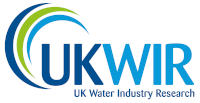The Chemical Investigations Programme (CIP) is the UK water industry’s response to current and emerging legislation on trace chemical substances in the water environment.
It brings together the 10 large water and wastewater companies in England and Wales with regulators (Defra, the Environment Agency and Natural Resources Wales) to investigate a range of chemical substances, often contained in many domestic products, that find their way into sewage and biosolids and reach rivers and streams; who or what is responsible for them getting there in the first place; and what can be done to reduce concentrations, if needed. Many of these chemicals – including metals, fire retardants and biocides, hydrocarbons, pharmaceuticals, hormones and personal care products – have the potential to be present in both untreated and treated effluent.
To help to address this challenge, the 10 water and wastewater companies in England and Wales funded a 10+ year programme of work as follows:
| Phase | Budget | Timeframe | Outcome |
| CIP1 | £25 million | 2010 - 2015 | Determined the sources/pathways of chemicals getting into rivers via Wastewater Treatment Works and characterised treated wastewater in terms of these chemicals. |
| CIP2 | £140 million | 2015 - 2020 | 600 Wastewater Treatment Works prioritised for further investigation to better understand the potential scale of the challenge. Also carried out technology trials at Wastewater Treatment Works to determine potential solutions to remove trace chemical substances before treated wastewater is released into rivers. |
| CIP3 | £25 million | 2020 - 2022 | Filling remaining gaps in knowledge, particularly around microplastics and understanding anti-microbial resistance in current wastewater treatment processes. |
Register |
Register
This UKWIR Tool is available to all-comers who have created an account with UKWIR, subscribed to the Tool and confirmed acceptance of the Terms and Conditions of Use.
Using the tool, the logged in user may view;
- The list of contributing Companies
- The list of Sewage Treatment Works included
- The Determinands included in the data collection
FILTER |
Filter
There are 3 million determinand readings in total. So, the tool has been developed to enable users to filter and extract the specific information they are seeking, rather than downloading all 3 million records each time.
To assist you to find what you are after, we have provided the following methods;
- Search by Determinand – Filter the database to find specific determinands
- Search by Sewage Treatment Works – Locate and view all determinands for a particular works
- Search by Company – Filter all the determinand data for a particular Companies contributing Sewage Treatment Plant.
You are guided though the process of building your filter, at the end of which we;
- run the filter
- Store your settings
- return to your list of data Filters
- store your data extract
EXTRACT |
Extract
On the list of your date filters we include buttons, to;
- Access and modify your filter
- Access the data you have gathered. Clicking this will open the data in a viewer, so you can inspect it. The viewer includes a button, in its top toolbar, where you can download an Excel spreadsheet of it.
- View your extracted data in a chart, together with a tool to export the chart as a picture.
You can modify your filter and / or create as many filters as you require.



